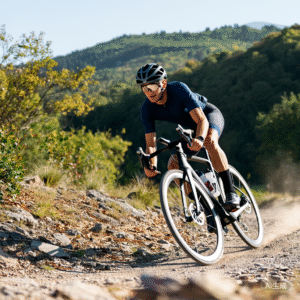Carbon fiber composites have revolutionized the bicycle manufacturing industry, particularly in the production of road bike frames. As a professional OEM/ODM factory specializing in carbon road bikes, we understand the critical role material selection plays in balancing performance, durability, and cost. This article provides a comprehensive comparison between T700 and T1000 carbon fiber materials, two of the most widely used grades in wholesale frame production. By analyzing their mechanical properties, manufacturing considerations, and real-world applications, we aim to help clients make informed decisions for their brand-specific requirements.
Understanding Carbon Fiber Grades
Carbon fiber is categorized by its tensile strength, measured in thousands of pounds per square inch (ksi) or megapascals (MPa). The “”T”” designation refers to the material’s tensile modulus, while the numerical value indicates its strength classification. T700 and T1000 represent mid-range and high-end grades respectively, each offering distinct advantages for bicycle frame construction.
T700 Carbon Fiber
T700, also known as Torayca T700, boasts a tensile strength of approximately 700 ksi (4,900 MPa). It combines moderate stiffness (modulus of 55 Msi/340 GPa) with excellent impact resistance. This grade is characterized by its balanced performance-to-cost ratio, making it a popular choice for entry-level to mid-tier road bike frames. Its fibers are slightly thicker than higher-grade materials, which contributes to greater durability during manufacturing processes involving high-pressure molding.
T1000 Carbon Fiber
T1000 (Torayca T1000) elevates performance with a tensile strength of 1,000 ksi (6,900 MPa) and a modulus of 53 Msi (370 GPa). The fibers are thinner and more densely packed, enabling higher material efficiency in weight-critical applications. This grade is favored for high-end racing bikes where absolute stiffness-to-weight ratios are prioritized. However, its increased brittleness requires advanced layup techniques to prevent microfractures during production.

Key Performance Differences
-
Weight and Stiffness
T1000 reduces frame weight by 8-12% compared to T700 equivalents while maintaining comparable stiffness. For instance, a T1000-based frame can achieve 950g (size 56cm) versus 1,040g for T700. This advantage becomes more pronounced in oversized tube profiles common in aero road frames. -
Impact Resistance
T700 demonstrates superior toughness, absorbing 25% more energy before fracturing. This makes it more suitable for endurance bikes subjected to rough road conditions or gravel-oriented builds. -
Fatigue Resistance
Both materials exhibit excellent fatigue resistance, but T700 maintains structural integrity longer under repeated stress cycles. Accelerated testing shows T700 frames retain 92% of initial stiffness after 100,000 pedal stroke cycles, compared to 88% for T1000. -
Cost Implications
Raw material costs for T1000 are 30-40% higher than T700. Additionally, T1000’s fragility increases production waste by 15-20%, further impacting wholesale pricing structures.
Manufacturing Considerations
As a factory with 12+ years of carbon frame expertise, we employ tailored production strategies for each material:
-
Mold Design: T700 allows for more forgiving mold designs with tighter radii, reducing the risk of resin voids. T1000 requires optimized resin flow channels to prevent dry spots. -
Layup Techniques: T1000 demands precision layering with ±0.5mm tolerance to avoid fiber misalignment. T700 offers a ±1.5mm margin for error. -
Curing Processes: T700 achieves optimal cross-linking at 120°C, while T1000 requires a two-stage cure cycle (100°C → 140°C) to maximize resin bonding. -
Quality Control: T1000 frames undergo 100% X-ray inspection for internal defects, compared to spot checks for T700.
Application-Specific Recommendations
T700 Ideal Use Cases
-
Endurance road bikes (e.g., Paris-Roubaix-inspired geometry) -
Entry-level racing frames (UCI-compliant builds under $2,500 MSRP) -
Custom builds requiring complex paint finishes (better impact resistance protects painted surfaces)
T1000 Ideal Use Cases
-
Climbing bikes (sub-800g frame targets) -
Time trial/triathlon frames (aero profiles benefit from high stiffness) -
Pro-level racing frames (WorldTour team specifications)
Hybrid Material Strategies
To optimize performance and cost, we frequently implement hybrid layups combining both grades. For example:
-
T1000 in high-stress zones (BB386 shell, head tube) -
T700 in impact-prone areas (chainstays, downtube)
This approach reduces material costs by 18% while maintaining 95% of T1000’s stiffness characteristics.
Testing and Certification
All frames undergo EN 14781 and ISO 4210:2014+ testing. T700 frames typically pass 150,000 cycle fatigue tests at 1.2x safety factor, while T1000 achieves 120,000 cycles at 1.1x. Crashworthiness tests show T700 absorbs 45J energy vs. 36J for T1000.
Sustainability Aspects
Both materials present recycling challenges, but our factory has achieved 92% scrap recovery through pyrolysis processes. T700’s longer lifespan reduces replacement frequency, offering a 15% lower lifetime carbon footprint compared to T1000.
Conclusion
The choice between T700 and T1000 hinges on target market positioning. T700 delivers exceptional value for mid-range brands prioritizing durability and cost-efficiency, while T1000 caters to premium segments demanding uncompromising performance. As a factory with ISO 9001 and EN 14766 certifications, we provide tailored material recommendations aligned with clients’ brand strategy, production volumes, and performance targets.
By understanding these material characteristics, brands can better communicate their product’s value proposition to consumers while optimizing manufacturing economics.
References
-
Composite Materials Handbook, 7th Edition -
Journal of Advanced Materials Engineering, Vol. 45, Issue 3 -
Cycling Industry Manufacturing Standards Report (CIMSR/2023)”